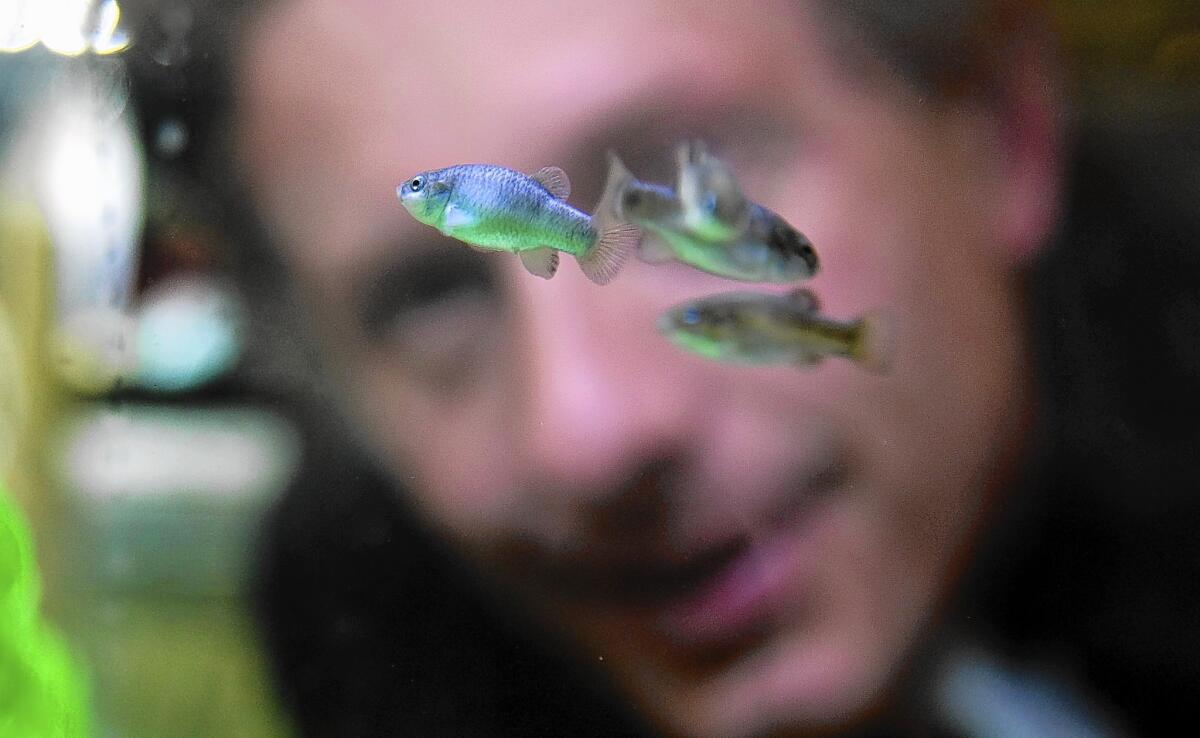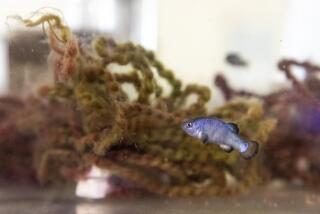Eggs laid by captive pupfish could save the endangered species

- Share via
Federal wildlife officials on Friday said Devil’s Hole pupfish have laid eggs in captivity for the first time, a biological breakthrough that could save the nearly extinct species.
“We’re thrilled — we’ve passed a major milestone,” said Olin Feuerbacher, an aquaculturist at the Ash Meadows Fish Conservation Facility in Amargosa Valley, Nev., which is home to all 29 of the federally endangered Devil’s Hole pupfish now in captivity. “We now have a good chance of establishing a captive lifeboat population.”
The eggs were especially significant because they were produced by fish that were the first hatched in captivity from eggs collected in the wild.
The imperiled species has existed in a remote rock tub in the Mojave Desert since the Ice Age. About 92 of the inch-long fish still swim in the wild, spa-like pool that became part of what is now Death Valley National Park in 1952.
Groundwater pumping and habitat disruptions inadvertently caused by research scientists trying to protect the pupfish are blamed for decimating the species, long regarded as a symbol of the desert conservation movement.
The species is now at the mercy of climate change.
The habitat’s geothermal heated water has been a constant 93 degrees Fahrenheit, which is the upper physiological limit for the species. Scientists warn that increasing ambient temperatures could eventually heat up the pool and destroy Devil’s Hole pupfish reproduction and egg development.
A year ago, federal biologists collected a batch of Devil’s Hole pupfish eggs, which produced the 13 females and 16 males now in captivity at Ash Meadows. Their offspring could generate a captive population of about 1,000 fish within two years.
Some of the captive-bred fish may be used to restock Devil’s Hole. Most of them, however, will be put in a new $4.5-million, 100,000-gallon tank at the federal Ash Meadows Wildlife Refuge — a replica of Devil’s Hole less than a mile away.
Twitter: @LouisSahagun
More to Read
Sign up for Essential California
The most important California stories and recommendations in your inbox every morning.
You may occasionally receive promotional content from the Los Angeles Times.














